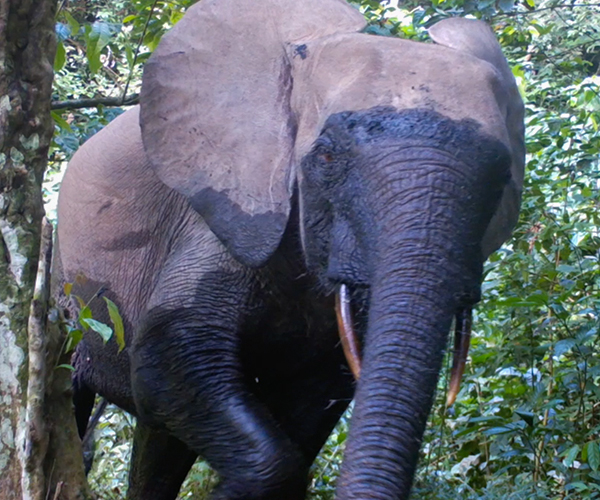Conservation in Practice with World Wildlife Fund Cameroon
Using the Conservation Standards to support communities and protect wildlife
by WWF Cameroon
Cameroon boasts incredible biodiversity, encompassing ecosystems from dense rainforests and coastal mangroves to savannah grasslands. These systems support a rich array of wildlife, including iconic species, such as forest elephants, gorillas, chimpanzees, and a remarkable variety of bird species. To preserve these species and support the livelihoods of communities that live side by side with these ecosystems, Anne Ntongho, a Senior Monitoring and Evaluation Officer at WWF, works to co-develop projects and strategies using the Conservation Standards.
“I would like to say that the Conservation Standards is a transformative approach in the sense that it positively influences our working style – from static to adaptive. It provides fantastic results, brings the right changes, and most of all, demonstrates impact on wildlife and ecosystems.” Ntongho says.
Through using the Conservation Standards, Anne and her team can effectively respond to changing conservation needs, ensuring their strategies are dynamic and effective. This approach allows them to address critical challenges surrounding forest conservation, elephants, and great apes in Cameroon and Central Africa.

Cross River gorillas live in a region populated by many humans who have encroached upon the gorilla’s territory—clearing forests for timber and to create fields for agriculture and livestock.

The Cross-Sanaga-Bioko Coastal Forest; Mt. Cameroon and Bioko Montane Forest, and Cameroon Highlands Forest are part of West Africa’s biodiversity hotspots. Aside from DRC and Congo, Cameroon host the largest portion of the Congo Basin, which holds over 15% of the world’s remaining tropical forests.

African forest elephants are the elusive cousin of the African savannah elephant. They inhabit the dense rainforests of west and central Africa.
More about the World Wildlife Fund Cameroon

Cameroon, a country of some 475,000 square kilometers, is fondly called “Africa in miniature,” as it is home to over 90% Africa’s ecological systems – including mangrove forests, coastal forests, lowland forests, savannah, and grasslands.
Since 1990, WWF has been working in Cameroon to preserve the immense biodiversity found within the county. WWF is currently present in 5 landscapes with several thematic scopes of work.
Visit the WWF Cameroon website.
Download CS
The Conservation Standards is the product of inputs, field tests, and discussions among members of the Conservation Measures Partnership (CMP), which has final editorial authority over the Conservation Standards. Substantial input was also provided by members of the Conservation Coaches Network (CCNet) and other CMP partners.
Photo Credit: Felix Cybulla
Support CS
The biodiversity conservation community is tackling large, complex, and urgent environmental problems where the stakes are high. However, we don’t have a fully functional system to assess the effectiveness of our actions. Without more rigorous measurement of effectiveness and disciplined recording of our efforts, we cannot know or demonstrate that we are achieving desired results.
Photo Credit: Felix Cybulla
Our Collaborators
Every organization, agency, project, and individual has its own preferred set of terms. There is no right answer – the most important thing is that the members of your project team and the people with whom you work have a clear and common understanding of whatever terms you choose to use.
Photo Credit: Chris Scarffe
Contact Us
To inquire about supporting Conservation Standards (CS) or for general inquiries, please contact us at CMPinfo@ConservationMeasures.org
Photo Credit: Nature Conservancy of Canada
